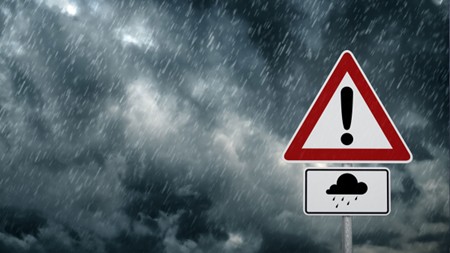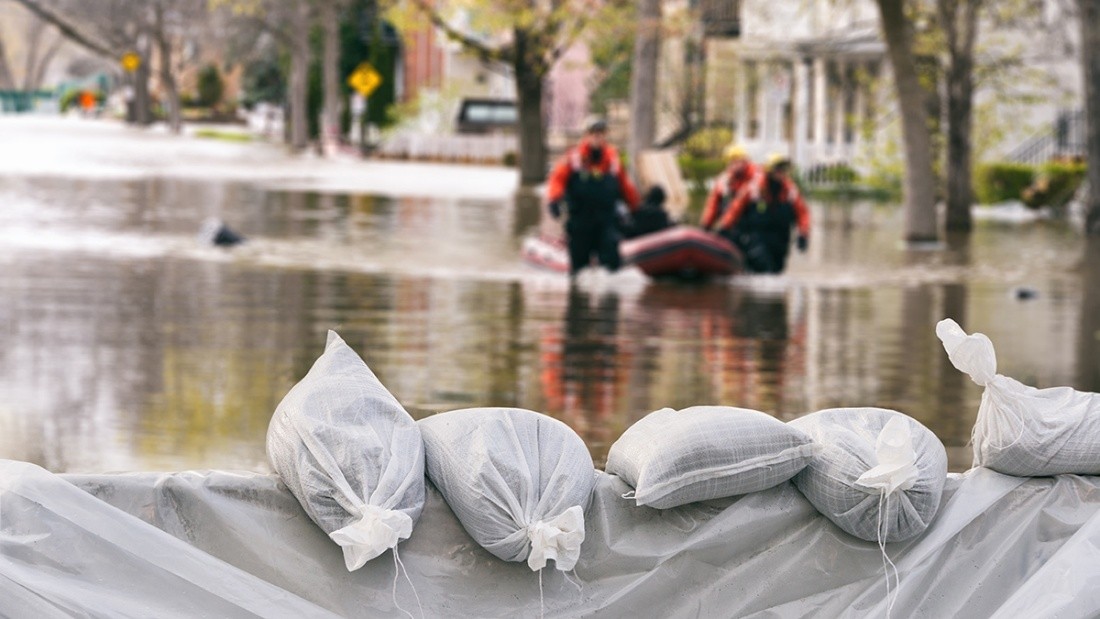Staying Safe After the Storm: Health and Safety Messages for Employers, Workers, and Volunteers
Posted on by
When hurricanes and floods strike, the aftermath may be as dangerous as the storm itself. From unstable structures to contaminated water, flood-damaged areas pose serious risks to response teams and cleanup crews. Employers, volunteer organizations, and workers— from first responders to recovery workers—should take proper safety measures and receive targeted safety guidance to stay protected on the job.
In May 2025, the Centers for Disease Control and Prevention (CDC), National Institute for Occupational Safety and Health (NIOSH) published the Hurricane and Flood Key Messages for Employers, Workers, and Volunteers, Third Edition. This preparedness and response resource provides guidance for public health partners on protecting workers, volunteers, and other partners during the aftermath of a flood or hurricane.

The following are a range of hazards commonly associated with flood and hurricane aftermath:
- Floodwater
- Carbon monoxide poisoning
- Mold
- Infectious diseases
The key messaging can be adapted for multiple communication formats, such as websites, press releases, media talking points, social media, fact sheets, and more to effectively convey information on workplace hazards and recommended mitigation strategies.
Each topic in the document includes a section with guidance for employers and worker organizations responsible for maintaining a safe working environment, and another section with information specifically for workers and volunteers. Employers, volunteer organizations, public health officials, emergency management personnel, and others can also use this document as a resource for planning and post-disaster evaluation before and after flooding events.
Floodwaters and Response to Hurricane and Flooding Events
Floodwaters pose significant hazards to workers involved in disaster response, including those performing rescue operations and assessing and cleaning up after a hurricane or flood. Some workers, such as those involved in utility restoration and search and rescue, may have the proper training, equipment, and experience to address these hazards effectively. However, many other workers, including volunteers, may not be trained in the hazards posed by floodwaters or in safe post-flood response practices. The Key Messages document serves as a valuable resource for all employers, workers, and volunteers engaged in responding to flooding events.
The Key Messages document includes the following sections:
- Overall Safety and Health
- For example: personal hygiene and handwashing, personal protective equipment
- Animals
- For example: displaced animals, livestock, and insects
- Biological Agents
- For example: mold, infectious diseases
- Chemical
- For example: carbon monoxide, household cleaners
- Physical
- For example: chainsaws and tree removal, fall prevention, motor vehicle safety
Flood response and recovery work is essential, but it comes with hazards. The updated Key Messages document provides critical information to help prevent injuries and illnesses among response and recovery workers during and after a flooding event. It also emphasizes the need for advance planning by employers and volunteer organizations in areas such as training and the provision of necessary equipment, including personal protective equipment. Proper training on the use of this equipment, along with the implementation of good work practices, is crucial for improving worker safety.
Public health partners and city and state governments can use information in the Key Messages document to develop their own messaging, improving the communication of safety and health recommendations to their communities during and after a flood. Employers and volunteer organizations are also encouraged to access the document to improve the safety and well-being of all involved in hurricane and flood response and recovery efforts.
Douglas Trout, MD, MHS, is Deputy Director, Office of Construction Safety and Health at NIOSH.
CDR Alice M. Shumate, PhD, MPH, is the NIOSH Deputy Associate Director for Emergency Preparedness and Response
CAPT Chad H. Dowell, MS, CIH, is the NIOSH Associate Director for Emergency Preparedness and Response
CDR Sherry Burrer, DVM, MPH, DACVPM, is a Senior Epidemiologist for the NIOSH Emergency Preparedness and Response Office
Scott Earnest, PhD, PE, CSP, is the Associate Director for the NIOSH Office of Construction Safety and Health.
Resources
NIOSH [2025]. Hurricane and Flood Key Messages for Employers, Workers, and Volunteers, Third Edition. Atlanta, GA: U.S. Centers for Disease Control and Prevention, National Institute for Occupational Safety and Health, DHHS (NIOSH) Publication No. 2025-106.
Also available in Spanish Mensajes clave sobre huracanes e inundaciones para empleadores, trabajadores y voluntarios.
Prior versions of the Key Messages document are available in Chinese, and Vietnamese.
NIOSH Web Pages
Responding to Natural Disasters and Extreme Weather
Update: NIOSH Warns of Hazards of Flood Cleanup Work
NIOSH advierte sobre los peligros de limpieza después de una inundación
Centers for Disease Control and Prevention
Occupational Safety and Health Administration
Posted on by

